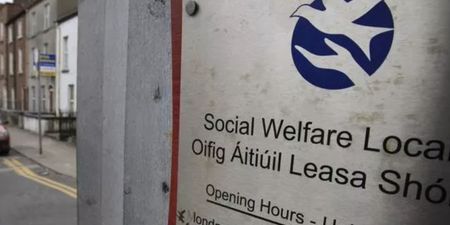millennial
/mɪˈlɛnɪəl/
noun
a person reaching young adulthood in the early 21st century.
Alright don’t look at us like that, we didn’t choose the name. After all, it’s not the kind of name you’d actually want affixed to your generation. Much like Generation X before it, it’s supposed to be derogatory. It’s an insult before it’s a classifier.
In fact, millennials are the number one suspect in the case of many murders. The napkin industry, for example, and the golfing industry. Oh, and the diamond industry. Come on guys, somebody think of the poor diamond magnates. What have they ever done wrong?
It’s true. Millennials spend less money on luxuries that were enjoyed by previous generations. Many of these industries are struggling to come to terms with the unexpected drop off in sales.
But it’s not that hard to understand why this is happening.
Millennials are reaching adulthood at a time that looks an awful lot like the end of history. Global heatwaves, diplomatic tensions that rival the iciest moments of the Cold War, uncertain professional futures… between desperate last-gasp attempts to preserve the environment in a state that won’t kill us all, and a nihilistic attitude towards savings and pensions (no doubt fuelled by the pension wipeout caused during the recession), millennials have less time for ultimately meaningless luxuries.
We’ll call this the “common sense” analysis.
Another interpretation of the word millennial is a little less accusatory, but still pretty dismissive.
Writing in the Irish Times, earlier this year, columnist Pilita Clark summed it up thusly: “The sad truth about millennials is that they are not nearly as special as they have been told,” ultimately arguing that there is actually very little to separate millennials from their progenitors in any significant sense, but that they are, perhaps, the most spoiled generation yet.
In some countries, there is the suggestion that the youth would benefit from a return to compulsive military service — something that might make more sense if the older generations could promise them a future that doesn’t involve an ocean surface that sizzles.
There is, perhaps, an exaggerated sense of how persecuted millennials are in the media — seeing as how every time they are targeted, the internet explodes. Again, the explanation for this is straightforward — cyberspace, social media especially, is dominated by young people.
In May of this year, Marketwatch tweeted: “By 35, you should have twice your salary saved.” In 2016, the infamous advice was to forego luxuries such as avocado toast. It’s not so much that these suggestions are insulting, it’s simply that they are patently ridiculous.
So perhaps the key difference between millennials and ageing media commentators is that they are prepared to do the math. Because they have no choice.
*****
Ireland’s housing crisis is, at its heart, a mathematical problem. The crisis is not theoretical, but easily demonstrable. If you can prove that people can’t afford houses then you can prove a crisis. So first things first, let’s do that.
The average price for a second-hand house in 1988 Ireland would have cost a buyer £39,892. 30 years on, the average house price across Ireland stands at roughly €254,000. At first glance, this represents an increase of over 636%.
So what are the immediate arguments used to justify this astronomical increase? Let’s take the first: inflation. Well, of course, there’s been significant inflation over the last 30 years. A healthy economy is always inflating, just a little. So we can expect £39,892 in ye olde time money to be worth a good bit more today, and for house prices to have adjusted in line with that inflation.
They have not.
According to the Central Statistics Office, £39,892 would be worth €74,711.20 in today’s money. So it might look like we have a lot more money these days, the figures actually haven’t even doubled. In that same time, house prices have increased more than six times over. This bears repeating. House prices have gone up by 637%.
The next possible explanation is that salaries are just higher now, so really… there’s nothing to complain about.
Salaries are higher. That’s undeniably true. But if you don’t mind, I’m about to take one of the Baby Boomer commentariat’s tricks and use it against them. Since we’ve established that inflation is less than 100% and house prices have increased by 637%, we know that inflation can’t explain the increase in house prices. But I’d wager that the increase in wages is a lot closer to the rate of inflation.
So what kind of change have we seen in income over that same timeframe? Have salaries risen to meet the catastrophic increase in house prices?
No.
Adjusted for inflation, the average industrial wage in the Irish economy for 1988 was €487.85. Times 52, that makes a yearly salary of €25,368.20. In the last 30 years, the industrial wage has hit €828.88 per week, bringing the yearly total to about €43,101.76. This matches the reported Irish average full-time salary overall, which stands at about €45,611. Much like the value of our currency, our wages haven’t. even. doubled.
€45,611. Or, in other words, enough money to straight up buy a house in 1988 without even needing to take out a mortgage loan. You could have just straight up bought the house.
Let’s keep going.
A single person earning €45,611 in Ireland will actually only take in €34,299 after taxes. Fortunately, the maximum mortgage loan that a homebuyer in Ireland can take out is actually calculated by multiplying the homebuyer’s gross salary by 3.5. Average salary times 3.5 = €159,638.50. Now does everyone remember the average house price? That’s right, it was €254,000. Thank you for paying attention.
So, as things currently stand, the highest mortgage that a bank can legally grant someone who’s earning the average full-time wage in Ireland falls almost €100,000 short of the average house price.
That doesn’t seem to add up.
How does this compare to the generation of Irish people who now write columns pointing out how millennials are lazy? Or bad with money? Or simply unwilling to get their hands dirty?
Data from the late 1980s shines a harsh light on how Ireland’s housing market has mutated and metastasised over the last 30 years.
From an Irish Times article dated 1988: “There are no snips in Dalkey,” declared agent Tom McCarron of HOK, while Austin McMahon of Allen Townsend acknowledged that it was possible to get a four-bed detached house in the area for “in the late £60,000s”.
“No snips.”
“In the late £60,000s.”
Any reader aged 35 or younger just felt their stomach lurch. £60,000 for a four-bedroom home in Dalkey. Total. So a deposit of around £6,000 — or in today’s money, less than €12,000. For a four-bedroom a house in one of Ireland’s most salubrious towns.
In modern-day Ireland, that wouldn’t be a snip. It wouldn’t even be a steal. It’s a categorical impossibility, several times over.
So these are the numbers. These are the numbers that categorically prove that buying a house in this day and age is on average about five times harder for millennials than it was for their parents.
As such, common tropes that once served our parents well no longer apply. If you’re earning €45,000 a year before tax and already renting, there is no amount you can save that will ever mean you can buy a house in Dublin. Your only options are to move back into the family home (if you have one), move to a different part of the country (if you can find a job there) or earn more money (which you’d probably already be doing if the option was available to you).
Sinn Féin’s Eoin Ó’Broin has explained why renting does not provide a solution to the housing crisis:
“The lack of supply of social housing means you could be waiting anywhere between nine and 14 years for a council house depending on the local authority. People in their 20s, possibly with children.”
“If your income is above the eligibility threshold for social housing, of course, the problem is rents are exceptionally high, they’re growing everywhere, they’re at levels which are unaffordable for most working people, particularly people in their 20s and early 30s.
“That means that they have to sacrifice other things. Young constituents who are going without not just holidays and nights out, but having to decide whether they pay for the heating or the rent. Whether you pay for certain kinds of food, or the rent.”
“Young people looking to buy are also in a very difficult position. The deposits needed are phenomenal, and if you’re renting and trying to buy, how are they supposed to pay the deposit? They’re forced to move back in with parents and live for extended periods of time, again, often as a couple, while they’re saving.”
“I have a constituent, late 20s, he’s got a decent job, and he’s just had to move with his partner, back in with his mam. Saving for a deposit, can’t get a mortgage. He’s not sure if he’s going to spend, five, six, seven, eight years living with his parents. This is a guy in his late 20s, he shouldn’t be living with his parents at all.”
Homeownership in Ireland reached an all-time low in 2014, and has only climbed by 1.2% to 69.8% in 2017 — despite the much heralded Celtic Phoenix. Between the early ’90s and early noughties, more than 80% of Irish people owned their homes.
An article from the Irish Times last year asked “Have the Irish given up on owning their homes?” as if there is some kind of way to afford a mortgage by sheer force of will. Alas.
Ó’Broin details the other issues that the crisis can present: “In many parts of Ireland, students are facing choices between an exceptionally long commute to and from college, sometimes two hours a day each way, or do they work extra hours to cover rent that can be between €700-€900. There’s lots of different effects of the housing crisis and lots of different groups affected. Young people are at a particular disadvantage.”
The numbers bear O’Broin out on this one.
As Ireland “grows,” more and more people are pushed further from where that growth is taking place — namely in central Dublin. The idea that more kids are going to college could be touted as a success, but the reality is that there are now 190,202 commuting to their third level institute. 30 years ago, that figure was 46,609. An increase of over 400%.
17% of third level students nationally have a one-way commute of over an hour.
More than one in six Irish students are travelling upwards of two hours a day to get to and from college. It might not be a mile-long walk barefoot in the snow, but it’s certainly not conducive to an 18-year-old student performing to their potential. Moving closer is simply not financially feasible.
Distance is not just affecting students either. In the most recent census, 1.88 million workers indicated they commuted to work — the highest number at any point in Irish history.
The effects are generational.
“Wage levels are lower,” Ó’Broin says. “If you’re a new entrant school teacher, you’re getting paid less than your older counterparts. If you’re in the nursing profession, you’re on a lower rate of payment. Wages generally at that point in your life are low, so it’s not just high rents, precarious rental accommodation and high deposits, it’s also low wages or discriminatory wage rates.”
Young people in Ireland are also impacted by technological advancements that make life easier for the haves, but harder for the have-nots.
“A very big problem in Dublin City Centre is the increasing prevalence of Airbnb in that area is crowding out rental properties that traditional would have been on the lower end of the price range, which again, is pushing prices up and squeezing people out of the market.”
“Young people are at the mercy of the market and all the competing pressures on that.”
Young people are at the mercy of the market. And the market is merciless.
Business law firm Mason Hayes Curran describe unpaid internships as a “recent phenomenon in Ireland”. Under Irish law, there is no legal definition of an intern. Once you’re hired as an “intern,” you could be doing any amount of work for any amount of money — and that amount is, quite commonly, none at all.
Older generations will bristle at the idea that work in Ireland has always been well paid — it has not. Even before internships came across the Atlantic and to Irish shores, Irish people have been working for free, whether as apprentices, as trainees, or simply as poorly treated workers.
But as time has worn on, the practice has become an accepted part of the Irish employment process. It has become the norm. It is now simply a built-in feature of most industries that there will be time spent working full-time for well below the minimum wage.
The National Minimum Wage Act 2000 obliges employers to pay employees who are engaged under a contract of employment. This is not adhered to in the case of many internships, and it some cases it was done with permission from the state — as in the case of the ill-fated JobBridge scheme.
The normalisation of unpaid labour largely took off when unemployment skyrocketed during the recession. Even though the recession is over, the practice has endured. And why wouldn’t it? An unregulated labour market sounds like an employer’s dream.
This summer alone, TV3 advertisement an internship position in human resources. Six months. Unpaid. An unpaid internship in human resources? Their first task should be getting to the bottom of who the hell came up with bright idea.
It stands to reason that unpaid internship schemes disproportionately benefit people who live closest to areas where houses cost the most, and people who are supported by their parents. It is likely that there is an overlap between those two groups. It is an inevitability that unpaid internships further opportunities for those who have money and close the door on those who don’t.
Young people have always been harangued with phrases like “Get a job!” The difference for millennials in Ireland is that many jobs don’t pay anymore.
********
When concerns are raised by young people — the impulse should never be to dismiss them.
Scapegoating — obfuscation — shifting the blame. All these things were on show recently when musician David Kitt detailed his decision to leave Dublin, having been priced out of the market. Quickly, the conversation shifted to demand: “What kind of country are we if our artists can’t afford to live in the capital?
Some thrilled in pointing out that while Dublin house prices may be high, it’s hard for artists to live in any capital city, and that Ireland has plenty of other cities and towns that are perfectly liveable.
Newsflash: barely anybody can afford to live in Dublin. Actuaries. Accountants. Public servants. Students. The unemployed. There is almost nobody left who has it easy.
This is true. In this author’s opinion, there are several places in Ireland one would be better off living in. But since when has a desire to live in one’s own hometown — where one was born, raised, schooled, where one’s parents and family and friends might all still live — since when is that an extravagance?
As the capital, and most populous city by far, Dublin is home to public transport, jobs, healthcare facilities, education facilities and amenities at a level that is not matched by anywhere else in Ireland. It’s not throwing a tantrum to think that action should be taken in order to cap soaring rents and house prices — nor to suggest that the problem might be alleviated by commitment to building more social housing, rather than tilling the field so it’s fertile for yet another hotel to spring up. Ireland is the 143rd most densely populated country in the world.
We are not short of land on which to build affordable housing. Especially when you consider that Belgium is 36th, and the Netherlands 30th. That we do not build more social housing is a deliberate choice — as is our decision to avoid regulation on vacant properties. The housing crisis is one that could be taken in hand — instead it rests on the long finger.
This kind of misdirection is a tactic faced by millennials when they try to raise any concern of any nature. One of the most popular excuses touted for the outrageous housing market is that millennials cannot afford homes as they “eat too many avocados”. Plenty of journalists immediately set about debating this claim, fact-checking the argument and seeing how many avocados one would need to consume before they actually managed to spend the price of the average house deposit (depending on where you buy your avocados, you’d have to buy about 84,667 avocados — that’s an avocado a day FOR 232 YEARS).
But that should go without saying.
It is entirely and patently obvious that no amount of wanton avocado consumption can explain a widespread inability to afford housing. You don’t need a calculator to know that if the political class is making a connection between grocery shopping and the inability to buy a house, they are absolutely taking the piss. They have not so much as begun to take the crisis seriously.
This crisis is mathematical. It’s demonstrable. In other words? It’s real.
But the most important argument to be made is one about attitude. About compassion. About empathy. If you can look at your upbringing and your journey through life and isolate the milestones and the toughest parts, wouldn’t you wish for your children, all children, to have it easier?
Things cannot change on a logistical level nor a legislative level until they change on an attitudinal level. Until people who are not necessarily directly affected by society’s problems acknowledge that it is unacceptable for so many people to be unable to find appropriate housing.
This week, seven young children, members of the next generation to come after millennials, as yet unnamed by those who will do their utmost to denigrate everything they say, were forced to sleep in a Garda station. Ireland cannot continue to fail its children in this way.
This problem will not be solved until millennials are listened to. Until millennials are prioritised. And don’t look at us like that. We didn’t choose the name.
LISTEN: You Must Be Jokin’ with Conor Sketches | Tiger Woods loves Ger Loughnane and cosplaying as Charles LeClerc





















































